|
DURING the past two years motoring has suffered a
series of body blows which even two world wars could not inflict. The
first was the cut-back in oil_production by the OPEC countries, coupled
with a four-fold increase in the price of the products. This in turn
led to the world recession, and in Britain especially, inflation has
meant rocketing costs and prices. All this meant that fewer cars were
being bought - and the big, luxury cars have suffered the worst.
But it does now seem that at least petrol costs have settled down, and
with the price war being waged on the forecourts, some real savings can
be made in motoring costs. So now might well be the time to have a look
around the luxury car market to see what is being offered.
|
| Jaquar XJ6 |
Rover 3500 |
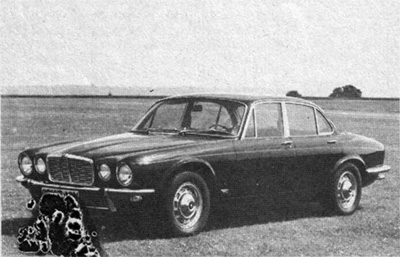
|
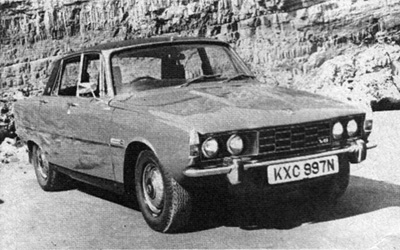
|
Current Jaguar XJs
have a higher front bumper with a grille beneath it while the dashboard
(below) is radically altered and improved
[The picture above
has a printing error] |
The latest Rover
3500 and 3500S have the black honeycomb grille, and a vinyl roof as
standard. The 3500S shares an identical control layout as the 2200TC
|
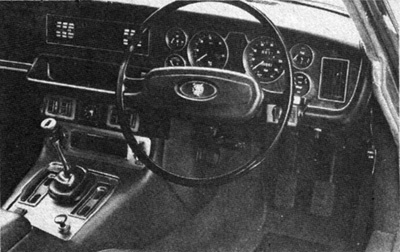 |

|
|
In this selection, two are British - Jaguar XJ and
Rover 3500, and two
Europeans - Mercedes-Benz and Citroën DS. None of these cars are
“upstarts“, and are all well established in the UK, with excellent
dealer and repair networks to back them up. But one should be aware
that these cars do require a certain amount of specialist knowledge to
maintain them, and this could cost a good deal.
|
| Citroën
DS |
Mercedes 200-series |
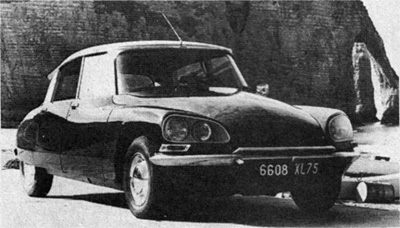
|
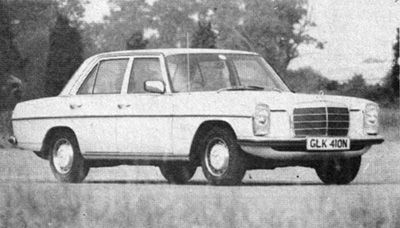
|
The
never-to-be-mistaken Citroën DS, with faired-in headlamps; the inner
ones steer with the front wheels. The latest manual gearshift
facia (below)
|
Clean, smooth lines
of the New Generation Mercedes - this is the 230/4. Clear
instruments and a padded steering wheel boss makes a clear facia; this
is the 240D
|
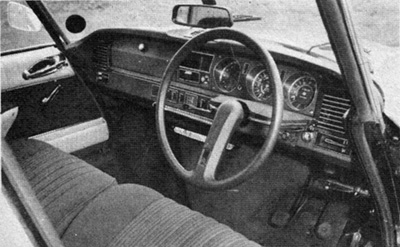
|
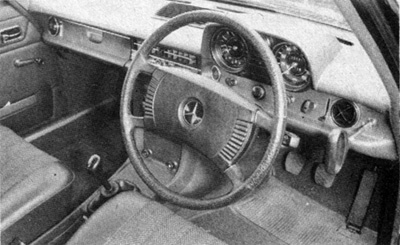
|
|
The ranges
Let’s start with the two British cars first. The
Jaguar XJ6 made its début at the London Show six-and-a-half years ago,
and was an immediate and resounding success. People were offering
£1,000 over the list price for the privilege of owning one, and right
up to the 1973 oil crisis there was a long waiting list. Initially
there was no Daimler equivalent, and the Sovereign continued on the old
420 body. The XJ6 was introduced with two engine sizes, both based on
the famous XK six-cylinder, twin ohc engine. The 2-8-litre version was
intended mainly for the Continental market, where some countries base
road tax on engine capacity, the 4.2-litre version was the principle
one in Britain, and both versions were available initially with
four-speed manual gearboxes, with optional overdrive, or Borg-Warner
automatic transmission.
While Jaguar were always ready to let Autocar have
4-2 litre engined cars for full Road Test, they never managed to get
round to letting us have a smaller-engined car. We eventually borrowed
a Daimler Sovereign 2.8 from Hurst Park Automobiles for the original
Secondhand Car Test series, published on 2 August 1973. In October
1973, the long wheelbase versions were announced, with 4in. extra
behind the B-post, but this model was restricted to the 4.2-litre cars.
A year later came the Series 2 cars, with a new facia, heating and
ventilation system, central door locking and revised control layout.
Externally, these cars can be distinguished by their higher front
bumper and different grille. The 2.8 was at last dropped from the UK
line-up, and this summer, the “old faithful” 3.4-litre engine was
brought out of retirement. At the same time, the title XJ6 was dropped,
and the six-cylinder cars were called simply the XJ 3.4 and XJ 4.2.
The Rover 3500 range preceded the XJ6 by a few months and was a natural
addition to the 2000 series. Rover had in fact been using the
Buick-based V8 engine for a year, in the much-loved but now defunct big
3-5. Unlike the other cars in this review, the Rover is very much only
a four-seater - a real driver’s car. Originally the car was called the
“Three Thousand Five”, but the badge simply said 3500. Now the cars are
generally called Thirty-five Hundreds. The V8 engine was designed by GM
in the United States for the Buick Special; when the Americans
developed their new thin-wall cast-iron technology, Rover acquired the
licence to make the all-alloy engine in the UK. It is interesting to
note that this 3,528 c.c. engine is within a few pounds weight of the
cast-iron 2000 inline four-cylinder engine used in the smaller cars.
The 3500 was offered with a Borg-Warner automatic transmission as
standard, simply because at that time the company did not have a
suitable manual transmission. At the 1971 London Show, the 3500S was
announced, using a carefully strengthened 2000TC gearbox. The S is a
very much quicker car than the automatic version, due in part to the
slightly higher power output due to the revised exhaust manifolds and
the lower transmission power losses.
One has to go right back 20 years to l955 to find
the birth of the incredible Citroën DS. In those days the car was a
totally new concept in motoring, with its revolutionary shark-like
lines, self-levelling hydropneumatic suspension, semi-automatic manual
gearbox and power steering. Alas, the DS is now no longer made, having
been replaced by the equally sleek looking CX. To trace the entire
development of the car would be impossible in the space allotted here,
so we will pick up the story at around the same time that the Jaguar
XJ6 and Rover 3500 came on the scene, in 1968. At that time, the old
DSI9 was replaced by the DS20, with uprated version of the venerable
four-cylinder 1,985 c.c. engine. The DS21, with the 2,175 c.c. engine
also got a boost in power. At the 1969 Paris Salon came the
fuel-injected version of the DS21, with the EFI 139 badge. This put the
power up from 109 to 125 bhp (net). At the same time the ID was
dropped, to be replaced by the D Special range. The following year, the
DS21 was given a 5-speed manual gearbox, with the semi-automatic
4-speed system remaining an option. Although a fully-automatic
Borg-Warner gearbox was available on the Continent, it was never
brought into this country. The Paris Salon in 1972 saw a further
change, with the DS21 being replaced by the DS23 with a capacity of
2,347 c.c. and developing 115 bhp on carburettors and 130 bhp with
petrol injection.
Again, the Mercedes-Benz line-up starts in 1968
with the “New Generation” cars. Initially, there were four engines,
ranging from 2 to 2 1/2 litres, and a couple of diesel versions. The
200 was not imported into the UK until recently, as the importers did
not want to lower their enviable image. The smallest in the range, the
220, first came to Britain in March 1968, and continued until it was
replaced by the current 230/4 in September 1973. The 240D (diesel) was
not imported until September 1973 - and since the fuel crisis has
enjoyed huge popularity. For the 250, things are a little more
confused: as the name implies, it was initially made with the 2
1/2-litre engine, but in September 1972, the engine size was increased
to 2.8 litres, but the title was unchanged. The 280E (with petrol
injection) came into Britain in June 1972. The two-door coupé 250CE
came to this country in 1969, and was replaced by the 280CE three years
later, at the same time as the 280E saloon.
The engine line-up is as follows: the 220 six-cylinder and 250
six-cylinder, with single overhead camshafts. The “new” 280
six-cylinder engine has twin overhead camshafts.
The 220D diesel is a comparatively rare bird in
Britain, and the current 240D is more popular.
The bodywork and chassis of the New Generation cars was entirely new.
The low-pivot swing axle rear suspension was replaced by a new type,
using semi-trailing arms. A great deal of development work was done on
making the body shell immensely strong, although there is none of the
ponderous ESV look about the range.
|
|
What to look for
Some seven years have now elapsed since the
models reviewed came on
the market, so care will have to be taken when selecting. These cars
attract the high-mileage motorist, and what may at first appear an
attractive bargain could lead you into some horribly high bills for
repairs. Inflation has caught up with spare part prices as well as
those of new cars! One problem facing older Jaguars is that the owner
may have been unable to maintain the model in the manner to which it
should be accustomed. The early 2.8s had a record of piston failure
prior to 1971, so avoid models made before then. The larger engines
have a phenomenal life - 100,000 miles is quite common. On manual
transmission cars, the clutch life may not be so good, and 20,000 miles
is about average. Replacing the clutch will be a long, expensive job.
The Rover 3500 has the advantage of a big,
lazy engine in a compact,
relatively light body, so that wear is not a major problem. Early cars
needed to run on 5-star petrol, but they can be down-graded to
run on
4-star. Check with a Rover specialist garage on what alterations or
adjustment need to be made. Special care needs to be paid to the
complex steering linkage; even the slightest wear can be magnified by
the time the play gets to the front wheels. On the bodywork side, the
Rover has the advantage (like the Citroën) of bolt-on panels. But
again, care should be taken to ensure that they are correctly fitted
and sealed.
It is a fact that some people simply hate the big Citroéns, while
others seem to have a permanent love affair with them. They are unique
in their handling, ride and complexity, and a Citroën “nut” will
forgive them everything. The engines are very long lived, but the
petrol injected ones need specialist attention when setting them up, as
do the high-pressure hydraulics. Do not be put off by the odd sighings
and groans from the suspension and steering; they are quite normal. The
bodywork is particularly vulnerable along the sides, where the
“tumble home” seems designed to catch gate posts. Later cars do have a
rubbing strake which will minimize minor damage.
The first thing to check when looking for a Mercedes is the service
book. It is essential that the car has been looked after correctly, and
as we said in the Buying Secondhand feature in Autocar of 16 August,
hundreds of pounds can be knocked off the price if it has not been
serviced by an authorized dealer. Many of the cars had the automatic
transmission and power steering options. There is little record of any
recurrent trouble, but check the exhaust system and the front brakes.
The exhaust system replacement cost is high, and the cars tend to get
through front pads rather quickly. It is rare to find a scruffy New
Generation Mercedes - but if you do come across one at a knock-down
price, avoid it!
|
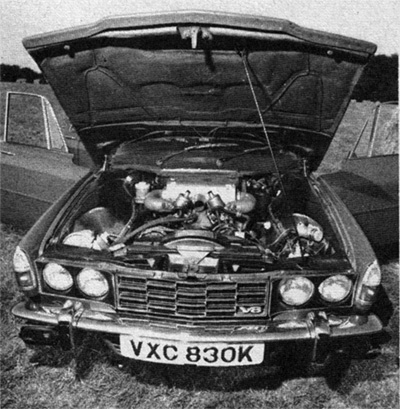 |
|
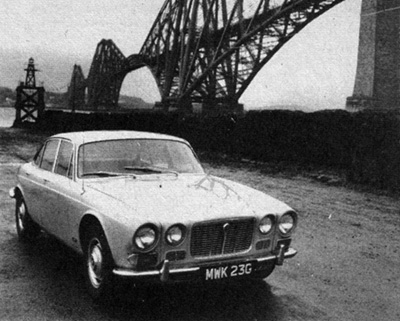
|
Above: Series 1 XJ Jaguars have the
lower bumper line and different wheels. This is a 4.2-litre
automatic
Below:
This summer Jaguar brought back the 3.4-litre engine to replace the
former 2.8-litre version; this engine has the latest UK emissions
equipment
|
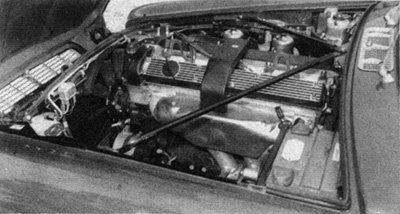 |
Below: On the Citroën DS, the engine
tends to become buried under the mass of electrical wiring and
high-pressure hydraulic plumbing
|

|
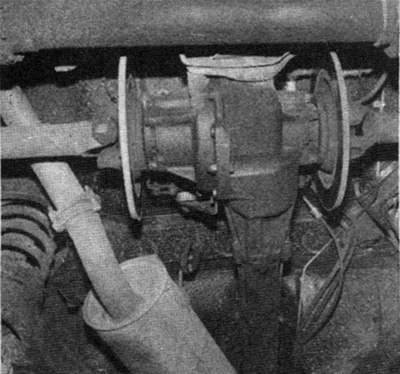 |
Above: fitting new pads to the
inboard rear discs on the Rover 3500 can be a difficult job, especially
if corrosion has developed
Left:
Despite the width of the V8 engine, the underbonnet space on the 3500
is not too cluttered and routing service points can be easily reached
|
|
|
Tester’s view
In their own ways, each of the cars is a delight
to drive. The XJ6 is still remarkable value for money, and the XK
engine, despite its years, gives a totally smooth output throughout the
range. No matter how hard the car is driven, it refuses to get noisy,
and the silky-smooth ride is probably among the best available. The 2.8
cars need to be driven fairly hard to get much performance from them,
and as a result fuel consumption suffers. If the majority of your
driving is out of town, the manual transmission with overdrive will
give the most relaxed cruising, but the automatic would be better if
the car is to be based in an urban area. The Series 2 facia layout is
probably rather easier to understand than the earlier one, but both are
mightily impressive.
The Rover 3500 is very much a driver’s car - fast, comfortable and with
good handling. Automatic or manual? Well, this is very much up to the
individual driver, but with all that torque, this car certainly does
not have to be rowed along with the gear lever. The power steering is
better, especially if the car is to be used a lot in town traffic.
Rover engineers did a lot of ergonomic planning with the original 2000,
and while the switches may look a bit odd, they are very easy to
distinguish. Some people find the suspension on the soft side, but this
does not mean that the handling is sloppy. But do consider the seating
aspect of the car - five can be carried, but the rear seats are
definitely shaped for two persons only.
As we have said, the Citroën has a character entirely of its own. The
four-cylinder engine tends to be rather lumpy and gets noisy when
worked hard. The choice of transmissions, between the manual and
semi-automatic, is again a personal thing, but we would generally
recommend the manual because of the relative simplicity. The steering
column change is good, but the mixture of pedals - normal for
accelerator and clutch and a black button mushroom for the brakes can
initially be confusing. On a fast, twisting road, the DS is a
delightful car to drive, with tenacious road-holding and good handling.
The self-levelling suspension can occasionally get caught out by road
irregularities, but one never ceases to be amused by the steering
headlamps, which make night driving such a pleasure.
The Mercedes, on the other hand, still retain a slight air of Teutonic
stuffiness about them, although the New Generation body style has done
a great deal to brighten them up. A great majority of cars have the
power steering and automatic transmission option, and this we prefer,
except on the 220 and 230/4, where the manual gearbox does cut down the
power losses and give better performance. The handling is good, and the
ride comfort superb; some people may criticize the seats for appearing
to be too hard, but in use, they prove to be very comfortable.
|
|
How they compare
|
|
Jaguar XJ6
|
Rover 3500
|
Citroën DS
|
Mercedes
200 series
|
General
data
|
Length
|
15ft 9.6in
|
14ft 11in
|
15ft 9in
|
220, 280E,
280CE 15ft 4.5in.
230/3 15ft 4.25in
|
Width
|
5ft 9.75in
|
5ft 6in
|
5ft 10.5in
|
220, 250,
230/4 5ft 9.7in
280 5ft 10in
|
Height
|
4ft 4.9in
|
4ft 8in
|
4ft 11.5in
|
220, 250,
230/4 4ft 8.7in
280 4ft 6.9in |
Engines
|
2.8 140 bhp
4.2 173 bhp
|
3500, 3500S
143 bhp
|
ID19, 81 bhp
DS20 91 bhp
D Special 89 bhp
DS20 99 bhp
DS21 106 bhp
DS23, 115 bhp (carbs)
130 bhp (inj)
|
220D 60 bhp
220 105 bhp
230/4 110 bhp
240 65 bhp
280 165 bhp
|
| Milestones |
|
XJ6, with 2.8
and 4.2 litre engines introduced Oct 68, with 4—speed
manual gearbox,,overdrive or automatic options. Daimler Sovereign
replacement year later, with OD and PAS standard. March 70, Borg-Warner
Type 12 transmission replaces old Model 8. Ventilation improved from
March 71. Oct 72, lwb versions on 4.2 cars. Sept 73, Series 2 cars with
new grille, bumpers, facia. 2.8 model dropped from home market |
3500 announced
April 1968, with Borg-Warner Type 35 auto 4 transmission. Dec 68, fixed
rear quarter vents and through-flow ventilation. Sept 70, restyiing
with black plastic honeycomb grille and new facia. Oct 71, 3500S with
manual 4-speed transmission added. Oct 73, vinyl root standard, and
Sundym glass BW Type 65 auto transmission.
|
Sept 67,
restyle, with faired-in headlamps swivelling on Pallas. DS19 dropped
Oct 68, replaced by ID and DS20. Injected DS21 Sept 69 and ID range
dropped, replaced by D Special. All DS21 range gets 5-speed manual
gearbox option, Oct 70. Sept 72, DS21 replaced by DS23, and 5-speed
gearbox optional across range. Oct 73, DS20 and Safari 20 go. Spring
1975, production of whole range ceases, replaced by CX
|
Jan 68, New
Generation range launched, with 220 and 250 in UK. Coupé version,
250CE, Nov 68. New dohc 2.B engine, with carbs or inj. To UK in 1972,
as 280E. Sept 72, 250 renamed 250 2-8; smaller engine car dropped. Sept
73, 220 replaced by 230/4 and 240D
|
Performance
|
0-60 mph (sec)
|
4.2 (A) 10.1
4.2 8.7
Sovereign (A) 10.4
|
3500 10.8
3500S 9.1
|
ID20 14.2
DS21 14.4
DS21 EFI 11.8
DS21 EFI 5-speed 12.3
|
220 13.6
230/4 13.4
240D 21.3
250 12.7
280E 10.1
280CE 8.9
|
Max speed (mph)
|
4.2 (A) 120
4.2 123
Sovereign (A) 120 |
3500 112
3500S 122 |
ID20 100
DS21 107
DS21 EFI 112
DS21 EFI 5-speed 118
|
220 102
230/4 110
240D 87
250 108
280E 126
280CE 124
|
Fuel
consumption
|
Overall mpg
|
4.2 (A) 15.2
4.2 16.0
Sovereign (A) 16.4 |
3500 18.0
3500S 20.1
|
ID20 23.8
DS21 22.0
DS21 EFI 20.9
DS21 EFI 5-speed 20.2
|
220 20.2
230/4 22.7
240D 29.0
250 17.3
280E 21.1
280CE 17.6
|
Approximate
price of spares
|
Engine
(exchange)
|
2.8 £354.80
4.2 £375.00
|
3500 £395.95
3500S £422.60
|
No direct
exchange scheme
|
250 Not
availabe
|
Gearbox
(exchange)
|
£150
|
auto £138.29
manual £115.13
|
No direct
exchange scheme |
£204.12 (auto)
|
Exhaust system
|
£97
|
£88.39
|
£35.91
|
£53.50
|
Front wing
|
£53
|
£37.21
|
£37.95
|
£35.04
|
Bonnet
|
£124
|
£100.71
|
£63.72
|
£54.99
|
Buying
Secondhand
|
feature in Autocar dated
|
6 July 1974
|
9 November 1974
|
7 June 1975
|
16 August 1975
|
|
|
|
|
|
|
|
|
|
|